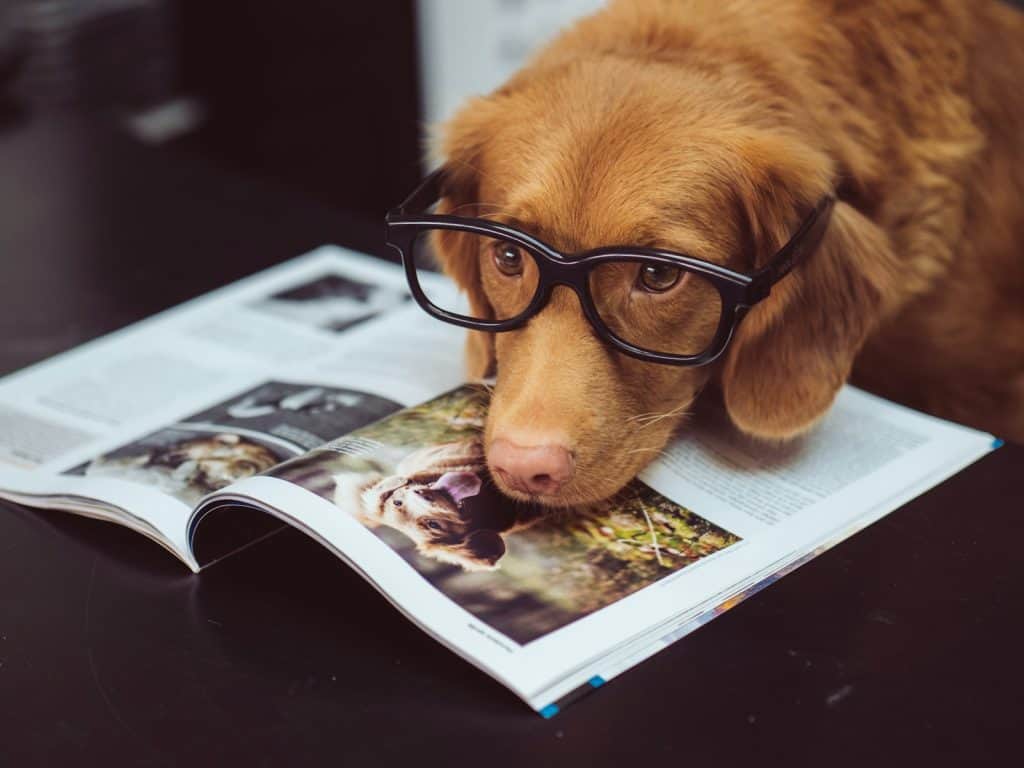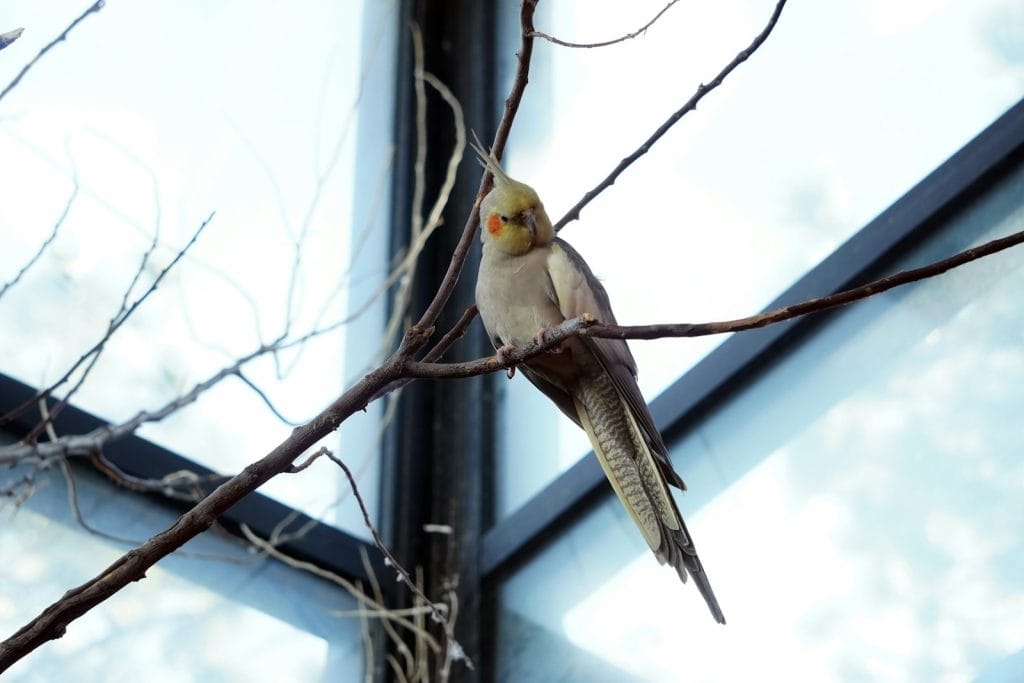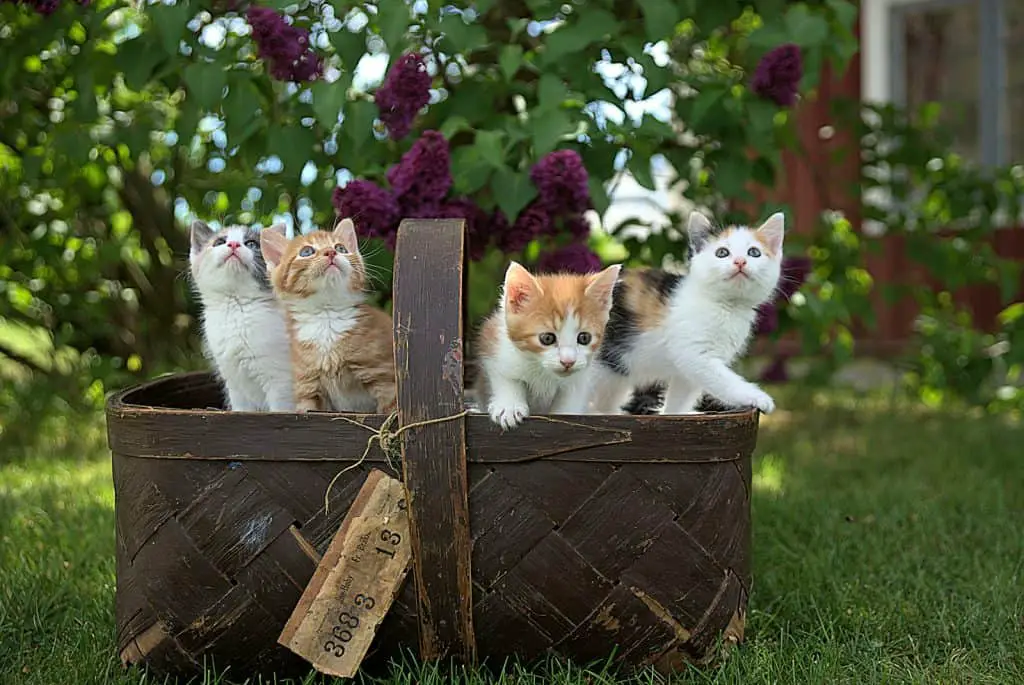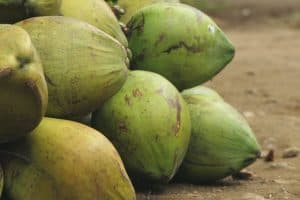Have you ever questioned, how can your other pets be harmful to your cockatiel? Ensuring the safety of your cockatiel requires careful consideration of the dynamics among different animals in your household. While cockatiels are renowned for their friendly and sociable nature, not all pets may exhibit the same temperament or respect the boundaries of their avian counterparts.
Understanding whether your other pets can be harmful to your cockatiel is essential for creating a harmonious living environment. Factors like the type of pet, their behavior, and previous interactions with other animals can all play a significant role in maintaining peace. Let’s dive into what you need to know to keep your cockatiel safe and sound.
Common Household Pets and Their Impact on Cockatiels

Understanding how your household pets interact with your cockatiel is crucial to ensure the bird’s safety and well-being. The following sections delve deeper into the relationships between common pets and cockatiels, highlighting potential risks and considerations.
Exploring Relationships Between Dogs, Cats, and Birds
Dogs and cats, the most common household pets, have unique dynamics with birds like cockatiels. Dogs that are naturally curious or have strong prey drives may see cockatiels as potential prey, especially if the bird is on the ground or flying low. Monitoring interactions and never leaving them unsupervised is essential. Cats, even when not overtly aggressive, pose a risk due to bacteria in their saliva; even a small scratch can be serious due to the bacteria’s potential to cause infections in birds.
Imagine your pet bird is sound asleep in its cage, and you have two cats lounging nearby. While these cats may seem harmless indoors, it’s important to remember that many outdoor cats have a natural instinct for killing small animals. Even indoor cats can retain these predatory tendencies. When your birds are playing in the same room as your cats, always take proper precautions.
Supervise their interactions closely to ensure your cats don’t view your feathered friend as prey. Creating a safe environment involves more than just physical barriers; it also means understanding the behaviors of all your pets and ensuring that your pet bird feels secure even when your cats are around.
For a harmonious coexistence, training your dogs and cats to remain calm around your cockatiel is vital. Use positive reinforcement to teach them gentle behavior around the bird cage. These precautions help minimize stress for your cockatiel and reduce the risk of accidents.
Risks of Smaller Pets Like Guinea Pigs and Rabbits
While smaller pets such as guinea pigs and rabbits are less likely to be predatory towards cockatiels, they can still pose indirect risks. The primary concern is the transmission of bacteria and germs. Cockatiels can pick up bacteria from the fur or feces of these animals, which can lead to illness.
Additionally, the presence of these animals can lead to heightened stress levels in cockatiels if they are not accustomed to each other’s company. To mitigate these risks, maintain a clean environment and keep the cockatiel’s cage elevated and separate from where your small animals roam. Regular vet check-ups are advised to ensure all your pets remain healthy and do not transmit diseases to each other.
Behavioral Considerations for Multi-Pet Households

Navigating the interactions among your pets is essential, especially when ensuring the safety of your cockatiel in a home with other animals. Understanding the behaviors of both predators and prey can help you foster a peaceful and safe environment for all your pets.
Understanding Predatory Behaviors in Cats and Dogs
Despite being domesticated, cats and dogs retain their natural predatory instincts, which can pose a potential risk to a cockatiel. Cats, in particular, are adept hunters that might see small birds as potential prey. Watching for signs such as fixation, stalking, or attempting to pounce can indicate that your cat sees your cockatiel as a target.
On the other hand, dogs may exhibit behaviors like barking, lunging, or even a subtle fixation that can frighten your cockatiel. Monitoring these behaviors helps you intervene before any harm occurs, ensuring your cockatiel’s safety around your other pets.
Stress Responses in Cockatiels
Cockatiels are highly sensitive to stress, which can manifest through behaviors like feather plucking, screaming, or reduced interaction. Stress in cockatiels often results from feeling threatened by the presence or actions of larger animals, including typical household pets like dogs and cats. Minimizing these stress triggers involves creating a secure space for your cockatiel, possibly in a different room or a well-enclosed area. Additionally, ensuring that interactions with dogs and cats are supervised and gradually introduced may help your cockatiel to adapt without the adverse effects of stress.
Safety Measures to Protect Your Cockatiel

Ensuring the safety of your cockatiel when other pets are present involves structured interactions and creating an environment where all animals can coexist without stress or harm. This segment outlines various practical steps you can take to protect your cockatiel from potential threats posed by other household pets.
Supervised Interactions and Safe Spaces
Supervised interactions are essential, particularly when introducing your cockatiel to other pets like dogs or cats. Begin these introductions slowly and monitor all interactions closely. Animals respond unpredictably, and even a normally gentle dog or cat can react based on instinct. Supervise these meeting sessions to intervene quickly if needed. Additionally, provide a safe space solely for your cockatiel, such as a dedicated bird room, where it can retreat if it feels threatened or stressed. When not under direct supervision, keeping your cockatiel in a room separate from other pets can prevent unintended injuries.
Physical Barriers and Separate Habitats
To further enhance the safety of your cockatiel, implement physical barriers. These include cages that are robust and secure, with bars spaced closely enough to prevent other pets from reaching in. Position the cage at a height that keeps the cockatiel out of reach of curious cats or playful dogs. Another effective strategy is to use glass doors or baby gates to separate the bird’s area from the rest of the house.
This arrangement allows pets to see and hear each other without physical contact, reducing the risk of aggressive behaviors. Additionally, ensure that each pet has its own habitat suited to its species’ requirements, providing them with a sense of security and personal space. This partitioning not only protects your cockatiel but also respects the territorial nature of other animals like dogs and cats, fostering peace across species boundaries.
By following these strategies, you ensure a secure environment where your cockatiel and other pets can live happily together with minimized risks of stress or harm.
- TRAINING TO KEEP FITParrots are the cleverest and cutest bird,that is why we keep it as a pet.But without always flying in the air and artificial feeding,they are vulnerable and easily get sick.This stand can let your bird get well trained,of course,with your help,and get more exercises to keep fit.
- 100% NATURAL AND ENVIRONMENTALLY FRIENDLYThe Hamiledyibird stand is made from 100% natural pine wood, and all the parts are connected with screws ,not glue.This way,the stand is more sturdy and more stable, firm and environmental protection.The perch surface polished smooth, will not hurt the bird feet.
- ENJOY GOOD TIMEFun to play, climb and rest, relieve boredom and increase activity levels, Perch toys provide a nice and comfortable place, with ladder swings and bells for your pet to play and exercise.
- STAINLESS STEEL FEEDER CUPS AND BASEThe bird perch comes with two stainless steel feeder cups that allow the bird to eat or drink while playing and resting, And a stainless steel base,easy to clean and durable in use, just wash by the water.
- PERFECT SIZEThe size of the bird perch is L14.1 x W9.1 x H17.7 inches,the size of the stainless steel base is L12.6 x W8.7 inches,The height of the feeding cup is 2 inches,diameter 2inch.Suitable for cockatiel, parakeet, yellow-vented parrots, gcc, sun conure, lorikeet, pionites, such small and medium sized birds,Not suitable for large birds, please purchase with caution.
Health Risks When Other Pets Are Around
Understanding the health risks involved when different species cohabit is paramount in preventing harm to your cockatiel. Interactions between small animals, such as dogs and cats, and pet birds can pose significant risks.
Potential for Disease Transmission
When pets such as dogs, cats, and even ferrets live under the same roof as cockatiels, they can unintentionally expose the birds to various diseases. These pets might carry bacteria or viruses that do not significantly affect their health but can be detrimental to birds. For example, Psittacosis—a bacterial infection that can be transferred from some pets to birds—might not show obvious symptoms in pets but can cause severe respiratory problems in cockatiels.
Regularly washing your hands after handling pets and before touching your cockatiel reduces the chance of cross-species disease transmission. Moreover, routine vet check-ups for all pets help identify and manage potential health risks early.
Allergens and Air Quality Concerns
Maintaining high air quality is crucial for cockatiels’ respiratory systems, which are sensitive to particulates and fumes that might be unnoticeable to other pets. Pets such as dogs and cats can bring in outdoor allergens like pollen and mold into the home, which can deteriorate the air quality and pose a respiratory threat to your bird.
Additionally, pet dander is a common allergen that can severely affect air quality. Using air purifiers in rooms where your cockatiel spends most of its time can help. Keeping the cockatiel’s cage away from high-traffic areas, where dust and dander accumulate, is another effective preventive measure. Ensuring ventilation systems are clean and filters are changed regularly also supports a contaminant-free environment, keeping the air safe for all your pets to breathe.
Wrapping Up: How can your other pets be harmful to your cockatiel?
You’ve learned how vital it is to manage the interactions between your cockatiel and other household pets. By taking proactive steps like supervised visits and providing separate spaces, you ensure the safety and happiness of all your animals. Remember to stay vigilant for any signs of stress in your cockatiel and keep up with regular veterinary care for every pet. With these measures in place, you’re on the path to fostering a peaceful and healthy environment for your diverse pet family.
Imagine your pet bird is sound asleep in its cage, and you have two cats lounging nearby. While these cats may seem harmless indoors, it’s important to remember that many outdoor cats have a natural instinct for killing small animals. Even indoor cats can retain these predatory tendencies. When your birds are playing in the same room as your cats, always take proper precautions. Supervise their interactions closely to ensure your cats don’t view your feathered friend as prey. Creating a safe environment involves more than just physical barriers; it also means understanding the behaviors of all your pets and ensuring that your pet bird feels secure even when your cats are around.
Strategies for Safely Managing Interactions Between Cockatiels and Other Household Pets
Managing the dynamics between cockatiels and other household pets involves understanding each animal’s behaviors, potential risks, and implementing proactive measures to foster a safe and harmonious environment.
Understanding Predatory Instincts and Risks
Cats and dogs, as common household pets, present unique challenges when cohabiting with cockatiels due to their predatory instincts. Cats, especially those accustomed to hunting outdoors, may view birds like cockatiels as prey. Their quick reflexes and ability to jump make them particularly adept at catching birds. Even indoor cats, though not actively hunting, may exhibit stalking behaviors triggered by the sight or movement of a bird.
Dogs, on the other hand, vary in their reactions based on breed and individual temperament. Breeds with strong hunting instincts or high prey drive, such as terriers or hounds, may perceive cockatiels as something to chase or investigate. Even well-meaning dogs can unintentionally harm a bird in their curiosity or excitement.
Supervised Interactions and Controlled Environments
One of the most effective strategies for ensuring the safety of cockatiels around dogs and cats is through supervised interactions. Introduce your pets gradually and under controlled conditions. Start with short, supervised sessions where the bird is securely in its cage or in a safe, enclosed space. This allows all animals to become familiar with each other’s presence without direct contact.
Use positive reinforcement techniques to train your dogs and cats to associate the cockatiel’s presence with calm and non-threatening behavior. Reward desirable behaviors such as ignoring the bird or sitting quietly nearby. Consistency and patience are key to gradually building trust and reducing the risk of predatory actions.
Creating Separate Living Spaces
While supervised interactions are crucial, it’s also important to provide separate living spaces for your cockatiel and other pets. Cockatiels should have a secure cage or aviary that is elevated and out of reach of curious dogs or cats. Ensure that the cage bars are spaced closely enough to prevent any attempts by pets to reach inside.
For cats, consider providing elevated perches or shelves where they can observe the cockatiel from a distance without direct access. This allows them to satisfy their curiosity without posing a threat to the bird’s safety. Similarly, dogs should have their own designated areas where they can relax and play, separate from the bird’s living space.
Behavioral Training and Enrichment
Behavioral training plays a crucial role in managing interactions between pets. Train your dogs and cats using positive reinforcement techniques to respect boundaries around the cockatiel’s cage or aviary. Teach them commands like “leave it” or “stay,” which can be used to redirect their attention away from the bird when needed.
Enrichment activities are also beneficial for both pets and can help reduce stress and boredom. Provide interactive toys, puzzle feeders, and regular play sessions to keep your dogs and cats mentally stimulated. This reduces their focus on the cockatiel and redirects their energy towards positive behaviors.
Health Considerations and Regular Vet Check-ups
Maintaining the health and well-being of all pets is essential when they share a household. Schedule regular veterinary check-ups for your cockatiel, dogs, and cats to monitor their overall health and detect any potential issues early. This is particularly important for birds, as they can be more susceptible to respiratory illnesses and infections from bacteria transmitted by other animals.
Keep all pets up-to-date on vaccinations and parasite prevention treatments as recommended by your veterinarian. Preventative measures reduce the risk of disease transmission between pets and help maintain a healthy environment for everyone.
Minimizing Stress and Creating a Safe Haven
Cockatiels are sensitive to stress and can easily become frightened or anxious in the presence of larger animals like dogs and cats. Minimize stress by creating a safe haven for your cockatiel in a quiet area of your home. Use curtains or partitions to create a calm environment where the bird can retreat when feeling overwhelmed.
Provide plenty of enrichment within the cockatiel’s living space, such as perches of varying heights, toys, and interactive treats. This encourages natural behaviors and helps the bird feel secure in its environment. Avoid placing the cage near loud or high-traffic areas of the house, as sudden noises or movements can startle the bird and increase stress levels.
Introducing Birds to Smaller Pets: Guinea Pigs, Rabbits, and More
When considering the introduction of cockatiels to smaller pets like guinea pigs or rabbits, it’s important to approach it with caution due to potential risks and challenges unique to each species.
Understanding Compatibility and Risks
While guinea pigs and rabbits are herbivores and generally not predatory towards birds like cockatiels, there are still considerations regarding their interactions. Guinea pigs, for instance, may exhibit curious behavior towards a cockatiel, which can inadvertently stress or frighten the bird. Additionally, their feces can harbor bacteria that may pose health risks to cockatiels if not properly managed.
Rabbits, known for their territorial behavior, may become defensive if they perceive the cockatiel as a threat to their space or resources. This can lead to aggressive behaviors, which can cause stress and potential injury to both animals. It’s essential to observe their interactions closely and intervene if signs of aggression or stress arise.
Managing Environmental Sharing and Hygiene
Sharing living spaces between cockatiels and smaller pets requires careful attention to hygiene and environmental management. Cockatiels are sensitive to airborne particles and potential pathogens carried in the feces or fur of other animals. Regular cleaning of cages and surrounding areas is crucial to minimize the risk of disease transmission and maintain a clean, healthy environment for all pets.
Provide separate areas for feeding and resting to reduce competition and potential conflicts between cockatiels and smaller pets. This allows each animal to have its own space and resources, reducing stress and promoting a harmonious coexistence. Consider placing the cockatiel’s cage in an elevated position to prevent direct contact with smaller pets and ensure their safety.
Enrichment and Socialization Strategies
Enrichment activities are beneficial for both cockatiels and smaller pets, providing mental stimulation and reducing boredom. Introduce interactive toys, tunnels, and hideaways within the shared environment to encourage natural behaviors and alleviate stress. Rotate toys regularly to maintain interest and prevent boredom.
Socialization between cockatiels and smaller pets should be gradual and supervised. Allow them to interact in controlled environments where both animals feel safe and comfortable. Positive reinforcement techniques, such as offering treats or praise for calm behavior, help create positive associations and build trust between species.
Other suggested articles:
The Socialization of Cockatiels and Dogs: Why It’s Important and How to Do It





Very interesting information!Perfect just what I was searching for!Expand blog